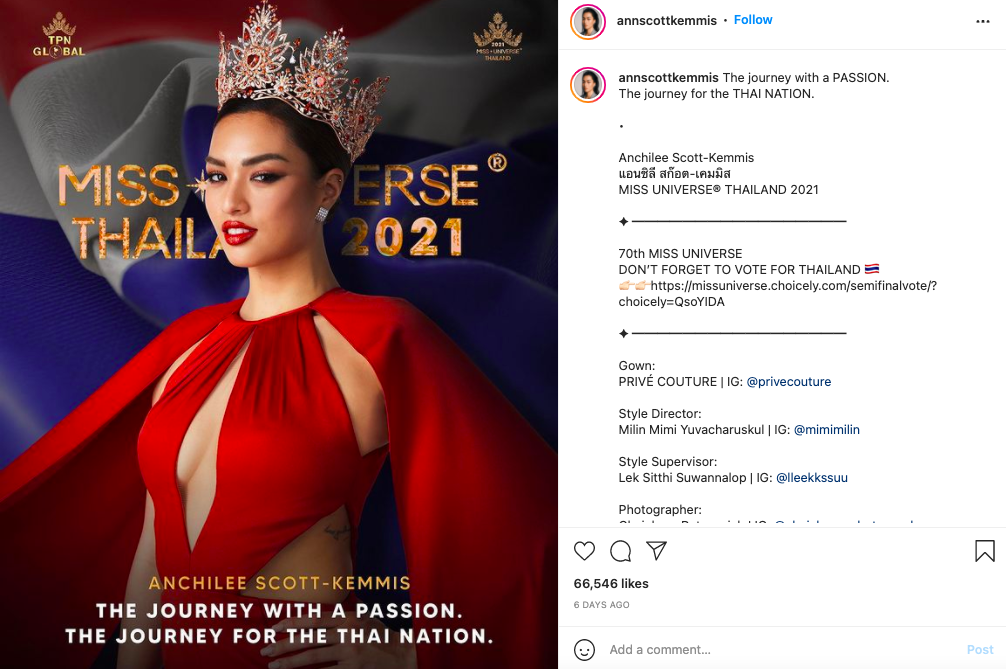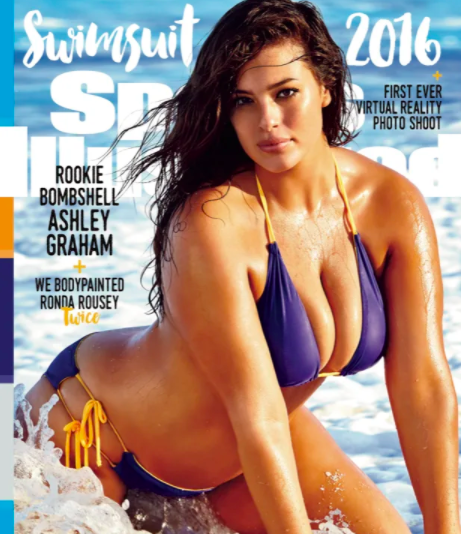Anchilee Scott-Kemmis has been called “plus-sized” and “big” but this year, she gained a title far more to her liking: Miss Universe Thailand!
Daughter of an Australian father and Thai mother, this athletic beauty is 1.83m tall and not at all like the rail-thin models commonly seen on runways and in fashion shoots.
She grew up in Thailand and captained her high school’s varsity volleyball, basketball, and softball teams. She moved to Australia to pursue a Bachelor of Arts degree in Sociology at the University of Sydney.

Her Instagram bio describes her as “redefining beauty standards by celebrating diversity, individuality and #RealSizeBeauty.
“Here I am, representing each and every one of you who ever felt excluded, judged, or hurt because you don’t fit into the standard. I’m here today to be your voice and our young girls celebrating individuality, uniqueness, and you. I see you. I hear you and I’m here for you,” she told the audience at the Ms Universe Thailand pageant last month.
When asked about her size, she responded: “No one really wants to be called plus-sized.
I think we should just be called models; you don’t need to add the curve, plus, or the sample size. It causes too much segregation and divides when it doesn’t have to.”
This unusual beauty queen’s trajectory reflects a growing global acceptance of more diverse standards of beauty, at least in the west. In 2016, American supermodel Ashley Graham became the first size-16 model to grace the coveted Sports Illustrated’s Swimsuit Edition.
Ms Graham is arguably the best-known full-figured model around the globe, landing the cover of nearly every major fashion magazine, as well as walking the runway or being featured for ad campaigns for brands such as Michael Kors Prabal Gurung and H&M.

More and more plus-sized women have also been featured in the modelling world, including Ms Scott-Kemmis’ fellow Australians, Robyn Lawley and Kate Wasley.
Challenging beauty standards is no mean feat in Asia, where fair-skinned women who do not take up too much space dominate magazine pages. And with the rise of Kpop stars, Korean standards of beauty have emerged—slim figures, small faces, a v-shaped jaw, pale skin, straight eyebrows, flawless skin, and large eyes.
In contrast, in Ms Scott-Kemmis’ #RealSizeBeauty advocacy, she’s spoken up about the differences in people’s bodies:
Each and every body is so different, we have different builds, different ways our bodies process food, exercise and what not. What I think is the most important thing is to treat your body with love, take care of it by putting your physical and mental health first.
The fulfilment you develop after you understand this, goes beyond fitting into any type of beauty standard, whether it is body shapes or even tattoos.
I am here to advocate for new standards, our own standards that doesn’t exclude people or put them down if they don’t fit into them. Pave your own way, make your own standard. Celebrate yourself. Loud. And. Proud,” she wrote in an Instagram post prior to her win.

/TISG
Read also: Former Malaysian beauty queen refuses to wear mask to showcase her ‘sovereignty’
Former Malaysian beauty queen refuses to wear mask to showcase her ‘sovereignty’

